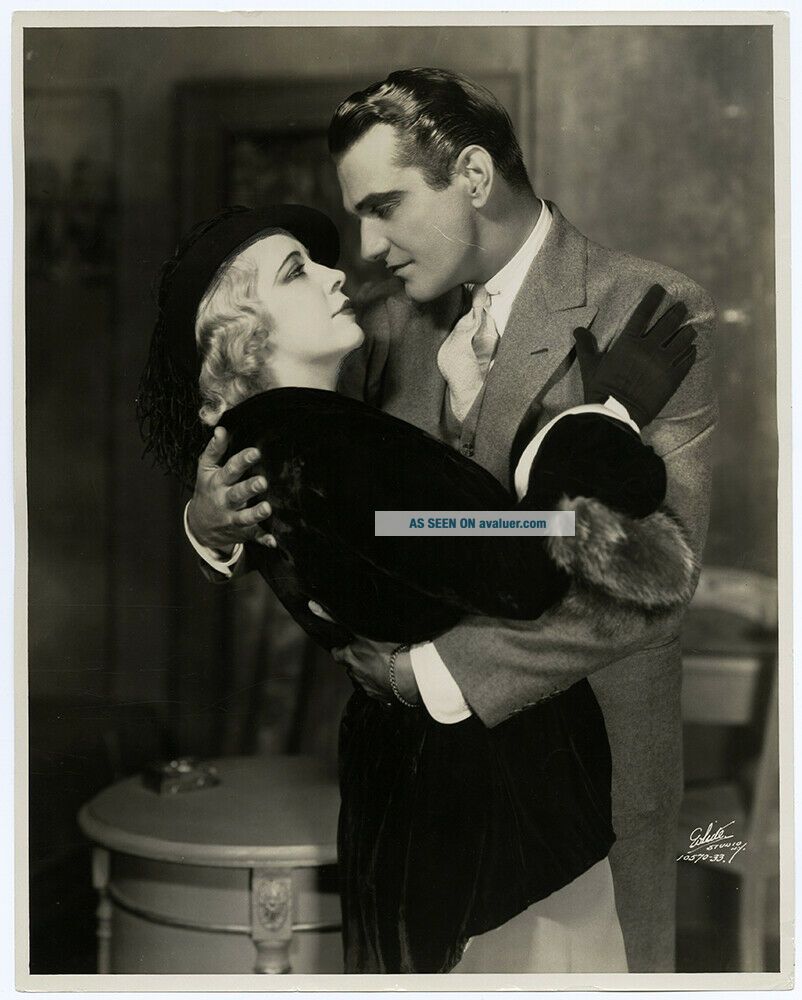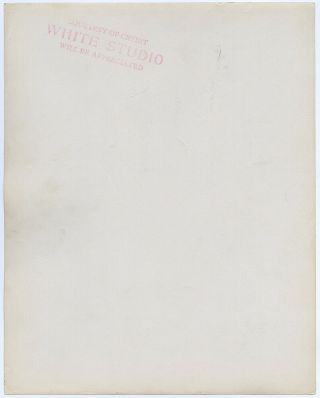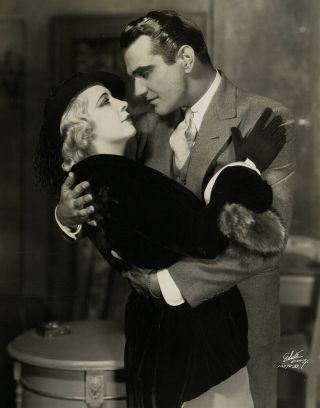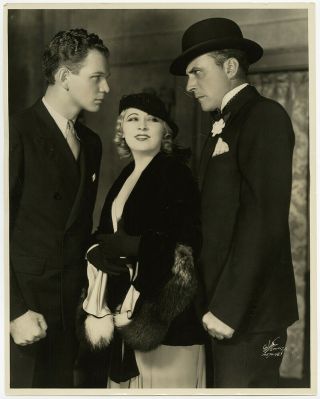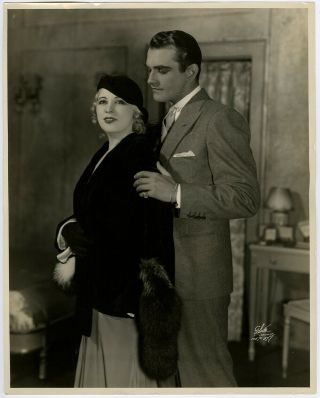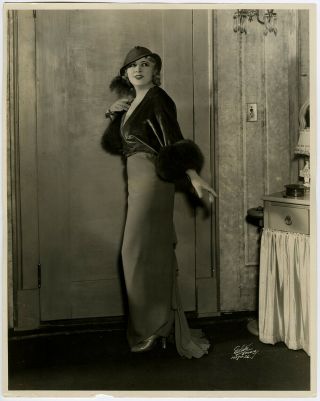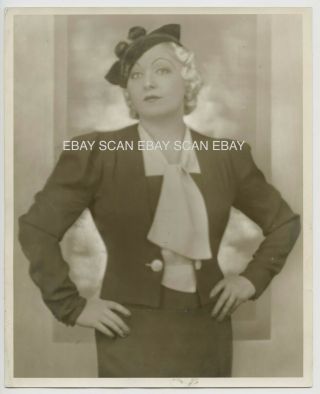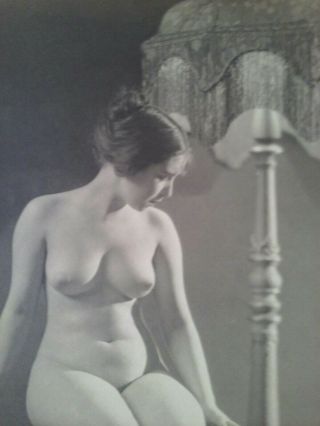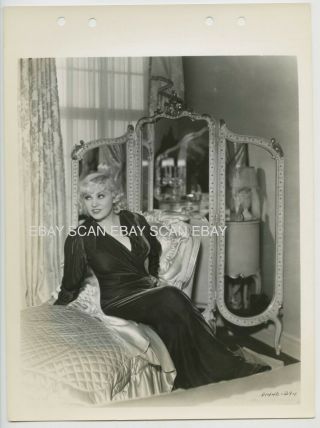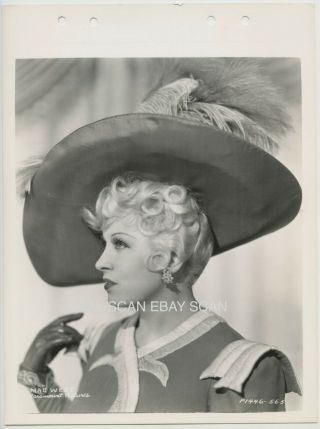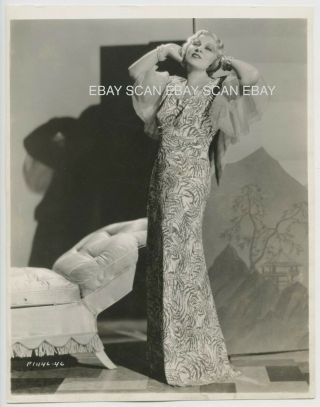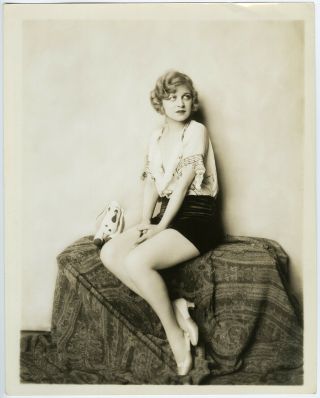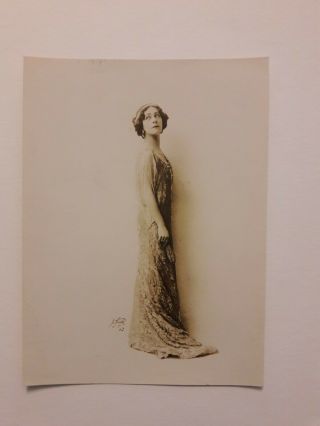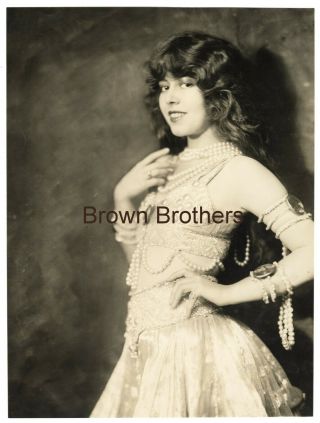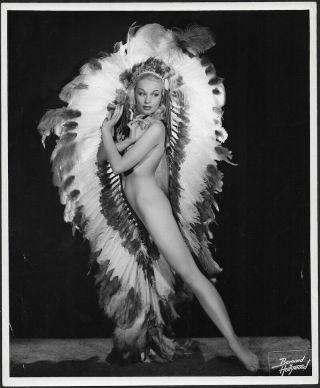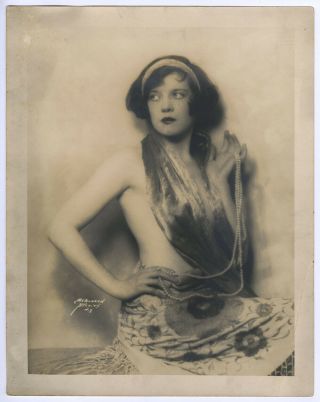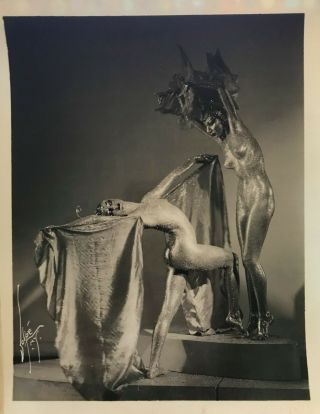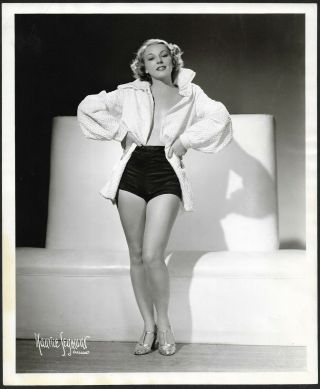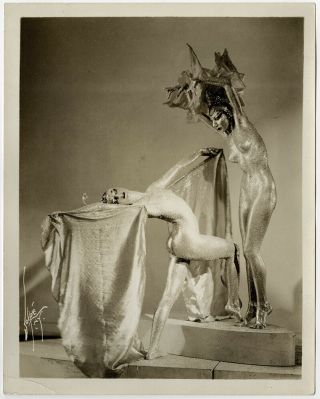Mae West Vintage Large 1931 White Studios Theatre Photograph Constant Sinner NR
Item History & Price
| Reference Number: Avaluer:1056958 | Size: 11" x 14" |
| Country/Region of Manufacture: United States | Modified Item: No |
| Original/Reproduction: Original |
Thanks to all our eBay bidders! We are honored to be your one-stop, 5-star source for vintage pin up, pulp magazines, original illustration art, decorative collectibles and ephemera with a wide and always changing assortment of antique and vintage items from the Victorian, Art Nouveau, Art Deco, and Mid-Century Modern eras. All items are 100% guaranteed to be original, vintage, and as described. Please feel free to contact us with any and all questions about the items and our p...olicies and please take a moment to peruse our other great eBay listings. All sell no reserve!
ITEM: This is a vintage and original, early and rare large format, silver gelatin photograph of bawdy blonde bombshell of the stage and screen Mae West. The Broadway baby has been photographed by White Studios in the midst of a romantic embrace with a handsome love interest. We believe this to be a production still from West's stage play The Constant Sinner (1931).
An actress, singer, playwright, screenwriter, comedian, and sex symbol, West's career spanned seven decades. She was well-known for her lighthearted bawdy double entendres and breezy sexual independence. West was one of the more controversial movie stars of her day and encountered many problems, especially censorship. She bucked the system, making comedy out of conventional mores, and the Depression-era audience admired her for it. When her cinematic career ended, she wrote books and plays and continued to perform in Las Vegas, in the United Kingdom, on radio and television and to record rock and roll albums. She was once asked about the various efforts to impede her career, to which she replied: "I believe in censorship. I made a fortune out of it."
Measures 11" x 14" on a glossy single weight paper stock.
Photographer's ink stamp on verso.
CONDITION: Fine condition with corner wear, some grease pencil markings making adjustments for publication, and scattered storage/handling wear throughout. Please use the included images as a conditional guide.
Guaranteed to be 100% vintage and original from Grapefruit Moon Gallery.
••••••••••••••••••••
Mary Jane West was born in Brooklyn, New York, on August 17, 1893, to parents involved in prizefighting and vaudeville. Mae herself worked on the stage and in vaudeville from the time she was five years old. She never was academically inclined because she was too busy performing. She studied dance as a child, and by the time she was 14 she was billed as "The Baby Vamp" for her performances on stage. Later Mae began writing her own plays. One of those plays, "Sex", landed her in jail for ten days on obscenity charges in 1926. Two years later her play "Diamond Lil" became a huge Broadway success. Mae caught the attention of the Hollywood studios and was given her first movie role with George Raft in Night After Night (1932). Although it was a small role, she was able to display a wit that was to make her world-famous. Raft himself said of Mae, "She stole everything but the cameras." She became a box-office smash hit, breaking all sorts of attendance records. Her second film, She Done Him Wrong (1933), was based on her earlier and popular play that she had written herself. The film was nominated for an Academy Award as Best Picture. It also made Cary Grant a star. Her third film later that year was I'm No Angel (1933). The controversy aroused by these two films resulted in the studios establishing the Motion Picture Production Code, which regulated what content could be shown or said in pictures. As a result of these codes, Mae began to double-talk so that a person could take a word or phrase any way they wished. This was so she could get her material past the censors, and it worked. She really felt she had a vested interest because it was her written work being scrutinized. She had already written and performed these for the stage with the very material now being filmed. Her next film, Belle of the Nineties (1934), was an equal hit. By 1936, with Klondike Annie (1936) and Go West Young Man (1936) she became the highest paid woman in the US. After 1937's Every Day's a Holiday (1937), she didn't make another film until 1940, when she co-starred with W.C. Fields in another film she wrote herself, My Little Chickadee (1940). It was well known she had little use for Fields and his ways, which were crude even for her. After The Heat's On (1943), Mae took a respite from the film world, mainly because the censors were getting stricter. She decided she would be able to have greater expression in her work if she went back to the stage. Mae continued to be a success there. When censorship began to end in the 1960s, she returned to film work in 1970's Myra Breckinridge (1970). Her last film was 1978's Sextette (1978). Mae suffered a series of strokes which finally resulted in her death at age 87 on November 22, 1980, in Hollywood, California. She was buried in New York. The actress, who only appeared in 12 films in 46 years, had a powerful impact on us. There was no doubt she was way ahead of her time with her sexual innuendos and how she made fun of a puritanical society. She did a lot to bring it out of the closet and perhaps we should be grateful for that.
- IMDb Mini Biography By: Denny Jackson
••••••••••••••••••••
White Studios, Manhattan, New York
Biography By: David S. Shields
For twenty-years from 1905 to 1925 White Studio was Broadway's foremost photographer of stage production. Founded by New York saloonkeeper Luther S. White (1857-1936), this photographic agency employed a series of cameramen from 1903 to 1936, some talented, some not, who recorded hundreds of performers and thousands of productions of the American stage. The Studio was divided into two operations: the portrait studio located on Broadway and a mobile team of production photographers who hauled lights, tripods, and cumbersome Agfa and Kodak plate cameras to the dress rehearsals for stage pictures. Two great artists worked uncredited in the portrait studio: Edward Thayer Monroe during the 1910s and Ralph Shaklee in the 1930s.
For much White Studio's history, George Lucas was chief stage photographer. Lucas revolutionized production photography with the introduction of flash-pan photography, a method of illumination safer than 'flash-light' (magnesium powder, alcohol, ignited by blow torch) used by Joseph Byron, the chief stage photographer on Broadway from 1893 to 1905, before the ascendency of White Studios.
Luther White, proprietor of the studio, in later life claimed to have been a photographer. Lucas, however, stated that White never posed or processed photographs. He was a broker and businessman. As an entrepreneur, White was effective. When Joseph Byron and his Percy were experiencing differences of opinion in 1905, White bought the elder Byron's equipment and usurped his client list. White then secured an exclusive agreement with the Schubert organization to record their New York productions.
During the 1920s, the studio lacked the aesthetic panache of the most advanced theatrical image artists. Luther White no longer exerted himself with the energy of his younger years. In 1930, he took up raising Guernsey Cows on his farm in Connecticut. He turned over direction of the studio to his son, Dexter, in 1934. At this juncture, the most experienced artist, George Lucas, departed setting up Lucas-Pritchard with Irving Pritchard, the man who kept the books for White Studio. Lucas quickly determined he needed a creative collaborator rather than a financial guru, so called upon his old colleague at White from the World War I period, Edward Thayer Monroe. Lucas-Pritchard became Lucas-Monroe. White Studio's old clients gravitated toward the new partnership.
Perhaps from stress induced by presiding over a failing enterprise, Dexter White died of a heart attack on May 4, 1939, bringing an end to the studio. Its archive was secured by the Theater Collection of the New York Public Library. However, many of the earliest glass plates were destroyed during the First World War when donated to the War Department for recycling. David S. Shields/ALS
Specialty:
White Studios dominated production photography in the New York theater for two decades, specializing in frontal panoramas of theatrical action taken during dress rehearsals and occasionally during performances. Because the exposure of the glass plates required that casts remain motionless for as long as 45 seconds, the production shots from 1904-1913 seem wooden and pedestrian. George W. Lucas, chief location photographer, became more innovative and intimate during the 1910s.
White Studios also had a portrait department. Edward Thayer Monroe's depictions of the early Ziegfeld performers are quite artistic, including the iconic view of Bessie McCoy sitting on the Crescent Moon. Another noteworthy body of early works are Lucas's production views of "Chanticleer.”
— Biography By: David S. Shields c/o Broadway (dot) CAS (dot) SC (dot) edu
••••••••••••••••••••



